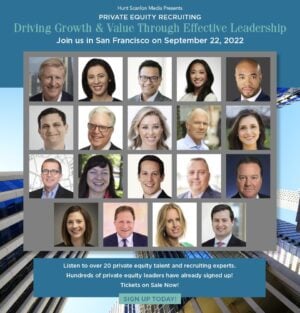How to Avoid Losing a Hire During the Final Stage

May 4, 2022 – The intense competition for executive talent has exploited another facet of the executive hiring process – the treacherous time period between offer and start date. While losing a candidate to a last-minute competing offer was not previously unheard of, the frequency and aggressiveness of incidents happening today requires CEOs, boards, and hiring teams to respond strategically in order to compete, according to a new report from JM Search. “With more executive job openings than qualified candidates, the fight for top talent is at an all-time high,” said report author Andrew Henry. “As a result, competing offers and counteroffers are the norm. When strong talent comes ‘in play’ – employers, investors, and CEOs are ready to employ whatever tactics necessary to prevail. This executive tug-of-war has become all too common, and typically initiates on or around the time of an offer, acceptance, or resignation.”
Previously, the time between offer and acceptance may rightfully have been the time for CEOs to celebrate and focus on other strategic initiatives. In today’s market, this phase has become one of the most arduous and competitive parts of bringing top executive talent onto the team, according to Mr. Henry. “To best mitigate risk, CEOs and hiring teams must change their mindset,” he said. “Know the fight is still looming, understand how risks may manifest themselves within the hiring process and deploy thoughtful, proactive tactics to meet the demands of today’s talent market.”
Mr. Henry and JM Search identify key areas of risk and explore proactive tactics that can be utilized to mitigate risk and ensure a successful hiring process is completed.
Understanding Potential Risks & Vulnerabilities
To effectively combat risks, the report notes that you must understand when and how vulnerabilities may appear during a talent transition process.
Former Employers, Bosses, and Private Equity Sponsors: A thorough hiring process almost always involves some form of communication with these entities. “Making these entities aware that a talented executive is planning to make a move can also create an unfortunate competitive side effect,” said Mr. Henry. “Once ‘in the know’ these parties may become rivals for that same individual. Hiring teams must be increasingly thoughtful about the timing and scope deployed in any pre-hiring reference due diligence.”

Andrew Henry is a partner at JM Search and leads the firm’s healthcare & life sciences practice. He brings over 20 years of executive search experience working across a diverse array of sectors within the healthcare industry. Mr. Henry has built his career supporting clients ranging from private equity and growth equity firms and their portfolio companies to Fortune 100 companies – collaborating to build differentiated leadership teams which drive value creation for shareholders.
Offer Shopping: “In today’s market, candidates recognize they are in high demand,” Mr. Henry said. “When developing an offer for a candidate, CEOs should operate with the belief that the offer terms will be made known to other parties – be it a current employer, former employer, or competing company. It’s critical that offers are compelling when compared with what the competition may propose.”
‘Below Market’ Talent: Inflation is real in today’s market. An increasingly rare find is the qualified talent whose compensation expectations happen to fall below the overall market. “Thoughtful CEOs will understand the vulnerabilities that are created when attempting to hire below market,” Mr. Henry said. “Sturdy offers are always recommended and should be able to hold up when compared to the market at large.”
Pre-Start Communications: Any communication that signals to the outside world that a strong executive is either in-play or about to embark upon a change, poses a risk for a rival to swoop in, according to the JM Search report. Broad public communications, such as updating statuses on social media, press releases, or company-wide email announcements, can have unintended consequences and lead to competing offers. Time invested developing a pre-start communication plan can serve to limit the likelihood of a surprise inquiry from a competing party.
Related: Skills Gap Points to Why We Need to Invest in People
Industry Superstars: Does your diligence tell you that you have rare, highly regarded talent in your pipeline? “In today’s hyper competitive market, the stronger the talent the tougher battle you will likely have to prevail in getting them to make a change,” said Mr. Henry.
Reference Leaks: Checking references – both official references provided by candidates, as well backchannel references that are discretely obtained without the candidate’s involvement or knowledge – remains absolutely vital in the proper diligence process of a new hire, according to Mr. Henry. “When it comes to the talent landscape, all references have the potential to turn into a competitor in some regard,” he said. “In instances where a reference is also struggling to fill key roles within their own organizations, he/she may become opportunistic and try to entice the candidate to join them. Alternatively, a reference can become a source of information in their network, notifying others of the potential availability of the candidate and inviting opportunistic rivals a chance to intercede.”
 The Most Common Recruiting Mistakes at the Executive Level
The Most Common Recruiting Mistakes at the Executive Level
Whether you’re a seasoned executive at a Fortune 500 company adding to your management team or a first-time founder and chief executive officer making a critical leadership hire for your start-up, Natalie Ryan of SPMB says common mistakes can derail the recruiting process. “As a client partner at SPMB, I have visibility into the most frequent recruiting mistakes and the simplest solutions to avoid them,” she said. In a recent report, Ms. Ryan provided the most frequent recruiting mistakes and the simplest solutions to avoid them.
Resignation Process: The resignation process will likely provoke a competitive conversation. JM Search notes that CEOs should understand that the day a candidate resigns starts a new phase of the recruitment cycle, one for which their attention and involvement is as vital as any other phase in the process.
The time between offer and start date can be turbulent. “By approaching the final leg of the hiring process with the same planfullness and intentionality as other phases of the hiring process, CEOs and hiring teams can prepare themselves to prevail in completing the hire amidst today’s fierce competitiveness,” said Mr. Henry. “With counteroffers, additional opportunities, and legal battles abundant, deploying new tactics can help to mitigate risk. As the market continues to evolve, accessing, recruiting, and retaining top leaders will be pivotal in driving growth and creating long term value for your business.”
JM Search is an advisor to CEOs, investors and boards of directors in recruiting, assessing, and delivering high performance leaders and transformational leadership teams. Its clients include private equity firms and portfolio companies, venture capital-backed businesses and publicly held companies across North America. Founded in 1980, the JM Search recruiting team brings together former operating and financial executives, investors, and experienced search professionals with deep industry specialization, functional expertise and proven access to talent spanning multiple industry sectors.
Related: Executive Search Firms Adapting to the New Normal
Contributed by Scott A. Scanlon, Editor-in-Chief; Dale M. Zupsansky, Managing Editor; and Stephen Sawicki, Managing Editor – Hunt Scanlon Media













